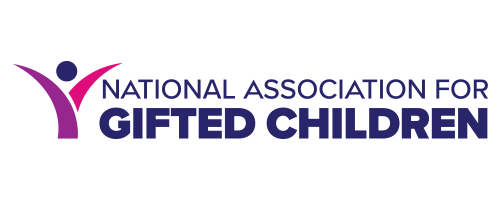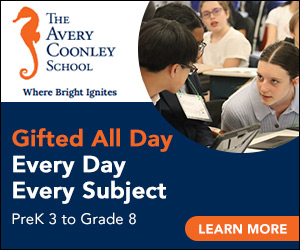Universal Screening for Gifted Education in the Arts
By Steve Heil
All children deserve the opportunity to develop their potential, including potential in the arts. Investing in the education of future visual and performing artists not only nurtures individual talents but also benefits society. However, the usual methods for identifying artistic talent may overlook many gifted young artists. Expanding the identification system to include artistic giftedness is a step in the right direction but relying solely on subjective methods for recognizing talent is insufficient.
Universal screening involves all students in one or more regular classes or grades, often using local norms established in the process. Local norms help educators compare what students know and can do with the work of other students who have had similar opportunities to learn. This has been shown to be an effective practice in academic domains (Card & Giuliano, 2016; Plucker & Peters, 2016) and offers a promising solution for a more inclusive and equitable approach to discovering and nurturing artistic talent in school.
The Challenge of Identifying Artistic Talent Equitably
Talented young artists frequently go unrecognized and unsupported in school. Arts teachers and high school counselors typically do not receive training about identifying or supportin students’ talent in the arts (Edwin & Fisher, 2023; Fisher, 2016). Traditional methods of gifted screening, such as academic tests and teacher-, parent-, or self-referral, tend to favor those with prominent social or cultural capital or general intellectual ability (Gaztambide-Fernandez, Saifer & Desai, 2013; Kaufman & Glăveanu, 2022; Kraehe, 2017). This bias may leave in the shadows many artistically gifted children, especially those from underrepresented groups. Oreck, et al. (2003) acknowledged the complex challenges related to the validity and equity of arts performance assessments, yet they believed these challenges to be surmountable.
The Promise of Universal Screening
Several arts assessments have been used as universal screeners. Oreck, et al., (2003) implemented the Talent Assessment Process in dance, music, and theater as universal screening in K-12 schools. Similarly, Haroutounian’s (2014) curriculum of sparkler lessons were designed to provoke signs of advanced artistic thinking in several arts disciplines. When offered to whole grades and accompanied by her observation checklists, these tools form a comprehensive universal screening system. Clark (1989) developed Clark’s Drawing Abilities Test (CDAT) as an instrument for universal screening, assessing children’s drawings from imagination with pencil on plain paper, a fundamental visual thinking and communication method (Clark & Zimmerman, 1997). A 2021 National Art Education Foundation (NAEF) Research Grant project, the CDAT Project (Heil, 2022) explored the use of local norms in universal screening with the CDAT and adaptive comparative judgment method.
Implementing Universal Screening for the Arts
As the principal investigator of the CDAT Project (Heil, 2022), I worked with seven art educators in two states to use the CDAT and art-classroom observation in universal screening of fourth graders with local norms. The reported results included recommendations for appropriate art instruction for all students, including for those whose advanced art learning needs were brought to light in the process. Some of those identified would have been missed if only one approach were used in the universal screening. The subjectivity of judgments about student drawings was managed using rigorous criteria for level of rater agreement, and the reliability and validity of the results were interpreted and communicated to the art teacher participants.
Implementation of universal screening for the arts requires careful consideration of the characteristics of artistic thinking that are unlike the abilities examined by cognitive measures and reading and mathematics achievement tests. Universal screening in the arts also requires careful interpretation of the validity of both the tasks examined and the evaluators’ expert judgments. If assessment literacy courses are not available locally to help educators with these considerations, look to Bailey, et al.’s (2020) five-module, online course and print materials for Creating and Using Performance Assessments: An Online Course for Practitioners, developed for the Institute of Education Sciences.
By identifying artistic talent early, schools may provide targeted support and appropriately advanced arts instruction, fostering equitable talent development from a young age.
Strategies for Success:
- Select. Choose performance tasks for assessment that are closely linked with the expectations and demands of forthcoming experiences along typical talent trajectories, both in and out of school.
- Evaluate. Check the psychometric properties of any published assessment and ask for help evaluating these if needed, or look to established guidelines to develop new performance assessments.
- Diversify. Incorporate a variety of assessment methods and involve evaluators capable of recognizing diverse ways that students may reveal their artistic talent.
- Embed. Administer universal screening tests that fit the content of regular arts programs and that inform arts instruction for everyone, not just those with a need for advanced or gifted arts instruction.
- Train. Educate teachers to recognize and nurture artistic potential, becoming aware of and moving beyond hidden biases.
Those interested in addressing the problems of identifying and serving the next generation of diverse visual and performing artists may find others who share their passion in NAGC’s Arts Network. Check us out on engage.nagc.org and look for us and the Arts Network sessions at the upcoming convention.
References:
- Bailey, J., Marcus, J., Gerzon, N., & Early-Hersey, H. (2020). Creating and using performance assessments: An online course for practitioners (REL 2021–048). U.S. Department of Education, Institute of Education Sciences, National Center for Education Evaluation and Regional Assistance, Regional Educational Laboratory Northeast & Islands. http://ies.ed.gov/ncee/edlabs
- Card, D., & Giuliano, L. (2016). Universal screening increases the representation of low-income and minority students in gifted education. Proceedings of the National Academy of Sciences, 113(48), 13678-13683.
- Clark, G. (1989). Screening and identifying students talented in the visual arts: Clark's Drawing Abilities Test. Gifted Child Quarterly, 33(3), 98-105.
- Clark, G., & Zimmerman, E. (1997). The influence of theoretical frameworks on Clark and Zimmerman’s research about art talent development. Journal of Aesthetic Education, 31(4), 49-63.
- Edwin, M., & Fisher, J. (2023). School counselors’ experience and self-efficacy in providing career counseling to high-ability visual artists. Professional School Counseling, 27(1), 1-11.
- Fisher, J. (2019). “They didn't tell us how”: Teaching high-ability students in a secondary setting. Art Education, 72(1), 28-34.
- Gaztambide-Fernández, R. A., Saifer, A., & Desai, C. (2013). “Talent” and the misrecognition of social advantage in specialized arts education. Roeper Review, 35(2), 124-135.
- Haroutounian, J. (2014). Arts talent ID: A framework for the identification of talented students in the arts. Royal Fireworks Press.
- Heil, S. (2022). Toward equitable art talent recognition in schools using Clark’s Drawing Abilities Test with local norms and comparative judgment. Unpublished manuscript, School of Education, Curriculum and Instruction Department, Indiana University, Bloomington, Indiana.
- Kaufman, J. C., & Glăveanu, V. P. (2022). Making the CASE for shadow creativity. Psychology of Aesthetics, Creativity, and the Arts, 16(1), 44–57. https://doi-org.proxyiub.uits.iu.edu/10.1037/aca0000313
- Kraehe, A. M. (2017). Arts equity: A praxis-oriented tale. Studies in Art Education, 58(4), 267-278.
- Oreck, B. A., Owen, S. V., & Baum, S. M. (2003). Validity, reliability, and equity issues in an observational talent assessment process in the performing arts. Journal for the Education of the Gifted, 27(1), 62-94.
- Plucker, J. A., & Peters, S. J. (2016). Excellence gaps in education: Expanding opportunities for talented students. Harvard Education Press.
Steve Heil is chair of NAGC's Arts Network. Learn more about all NAGC networks and special interest groups.


